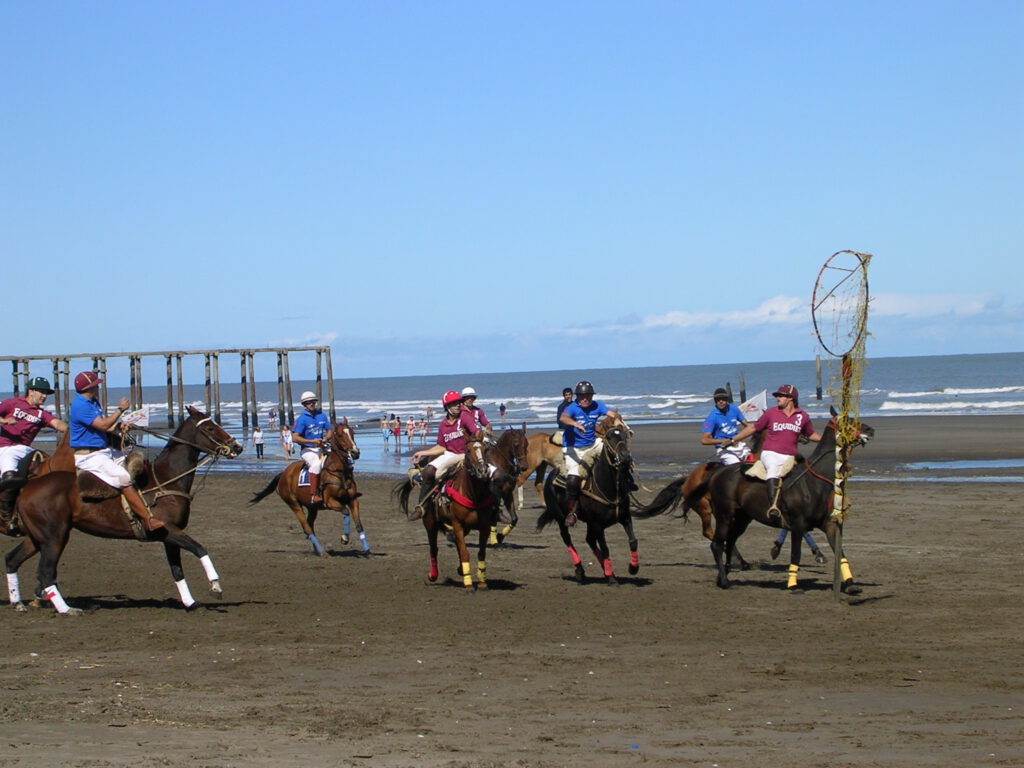Of all the games played by the gauchos of the Argentine pampas, pato is undoubtedly the most famous. But before becoming a national sport in 1953, with its own federation and official rules, it had to undergo radical changes.

The history of pato
Chroniclers from the 17th century described a “corrida de pato”, a race that consisted of seizing a pato (Spanish for duck) – a dead duck wrapped in a leather bag with handles – and bringing it back to the goal. The starting and ending point was usually a pulperia (the gaucho’s saloon). Rivaling each other in horsemanship, strength, cunning but also violence, the riders, sometimes hundreds of them, did not obey any law in this race having for only rule the obligation for the holder of the pato to always keep it visible, at arm’s length. The Church and the local authorities condemned and forbade the practice of pato.
The pampas were then cut up by barbed wire, the gauchos were transformed into agricultural workers, and the pato owed its salvation only to the gaucha tradition that it embodied and from which no one would have wanted to depart.
Pato today
Today, pato is played in 3, 4 or 5 periods of eight minutes, on a field 75 to 100 meters long and 30 to 40 meters wide, with a goal at each end. The ball is made of leather and has 4 handles. Each team consists of 3 players whose level is established according to a handicap (from 0 to 10). The set of rules concerns the use of the keys, the handling, and the collection of the pato (always by the right), the snatching, the marking, and the goals. The use of stirrups is not allowed, which makes some of the riders’ actions more spectacular.
Discover Royal Horse’s S-200 and S-250 supplementary feeds for sport and leisure horses!


